What happens when 16 WMS members, many of whom are strangers, join each other for a 12-day journey in Nepal? They, along with the Sherpa guides, become a family with a new appreciation for different cultures and a sense of ownership and responsibility for the healthcare of a small region.
Delayed for two years, the Wilderness Medical Society's trek to celebrate the partnership with the Wongchhu Memorial Hospital was a resounding success. Not everything went as expected, but in the true spirit of wilderness medicine, we adjusted our plans and continued to have a fantastic experience.=================
Wongchhu Sherpa Memorial Hospital sits atop a small hill amongst several
villages. In addition to Everest ER, Musa Masala, and many other
donors, the Wilderness Medical Society has played a pivotal role in the
development and funding of the endeavor. The hospital has already
provided acute care to many and preventative care to more. This trek was
an opportunity for WMS members to experience the Everest region and
visit the hospital site. Each evening, the educational leaders of the
group led discussions on topics ranging from the effects of altitude to
endemic diseases. The varied experiences of each member led to robust
discussions capitalizing on the expertise of each participant, including
those with no medical background.
Beginning in Kathmandu, the group toured the Pashupatinath Temple and
the Boudhanath Stupa - two UNESCO World Heritage sites. Our tour was
followed by a cultural dinner where we were treated to traditional foods
and a display of traditional regional dances.
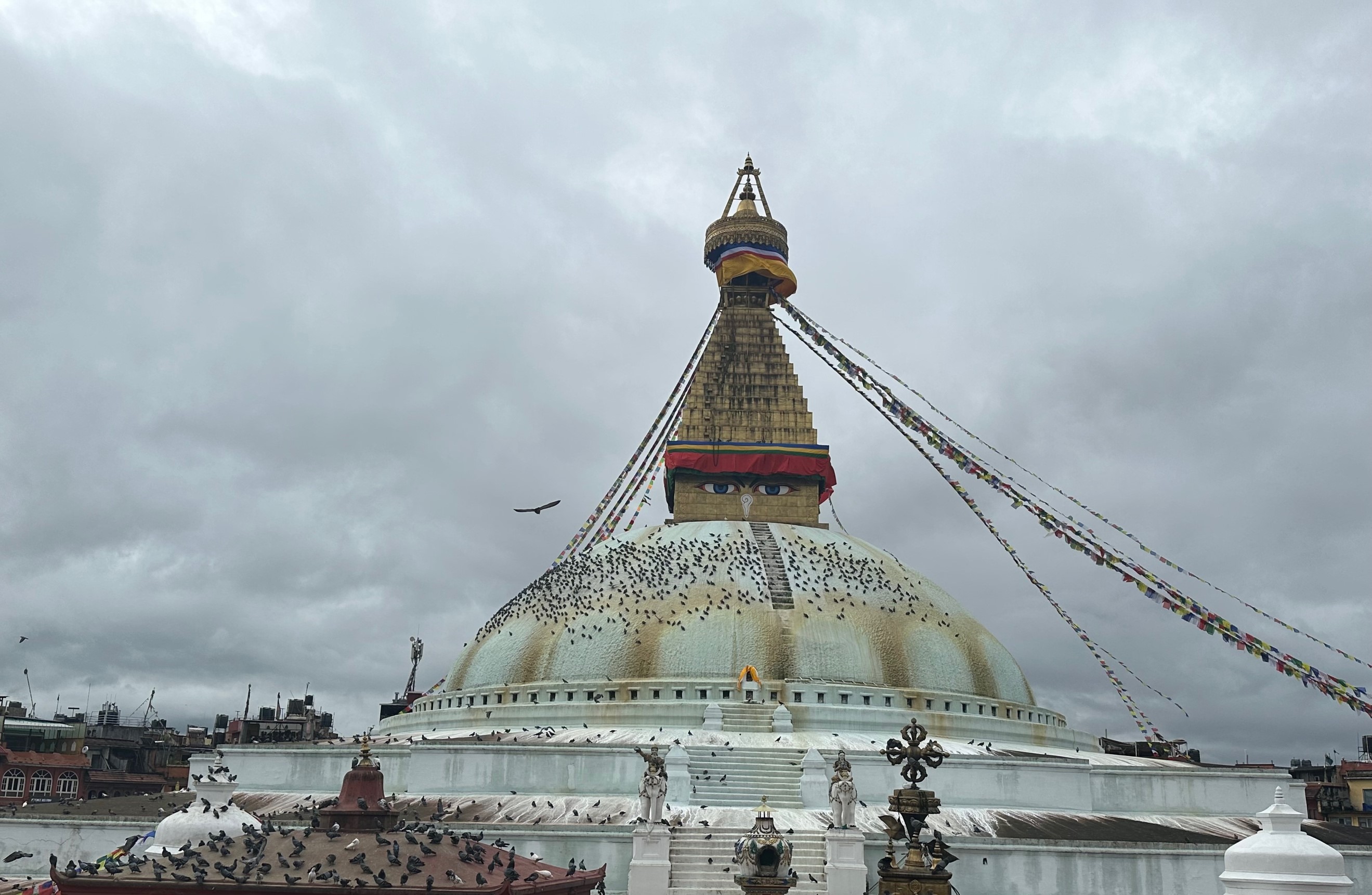
The morning of our flight to Lukla, the weather was somewhat uncooperative. Too large to fit on one aircraft, part of our group was to travel by helicopter. Ultimately, most of the trekkers advanced from Lukla to Phakding, while a smaller group met them the following day.
The route travels over dirt paths, cobbled stones, constructed steps, and soaring suspension bridges. We danced over and through mud and yak dung, smiling at misty skies. Bridges, garlanded with prayer flags and kata scarves, spanned across rivers swollen from the continuing monsoons.
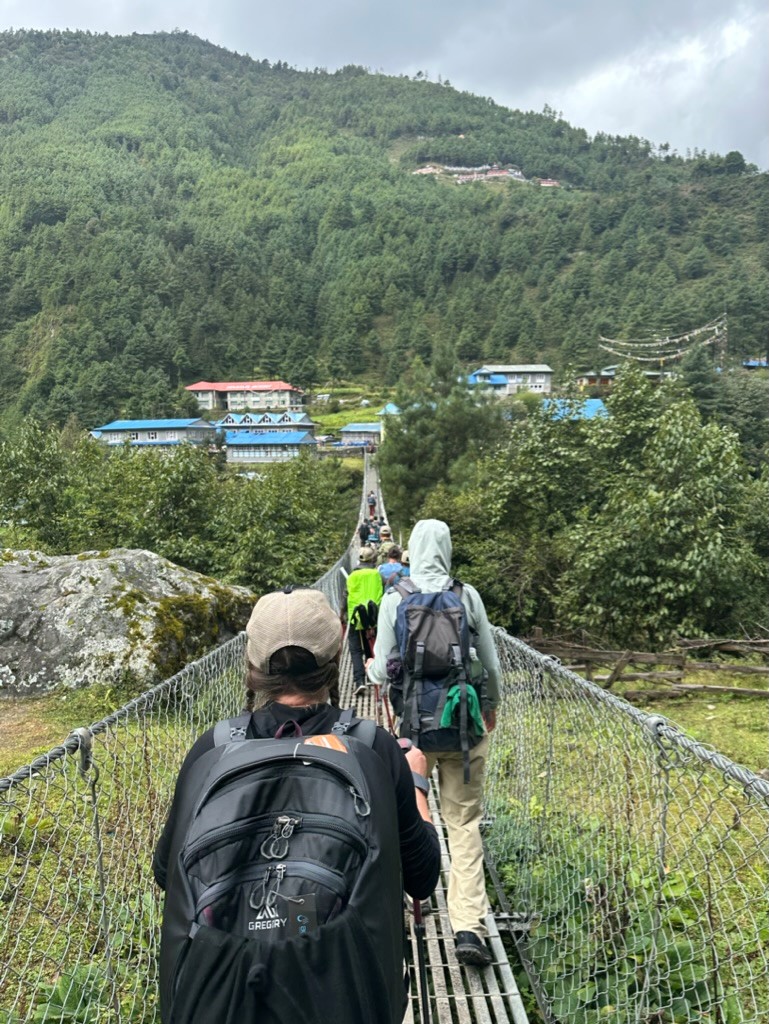
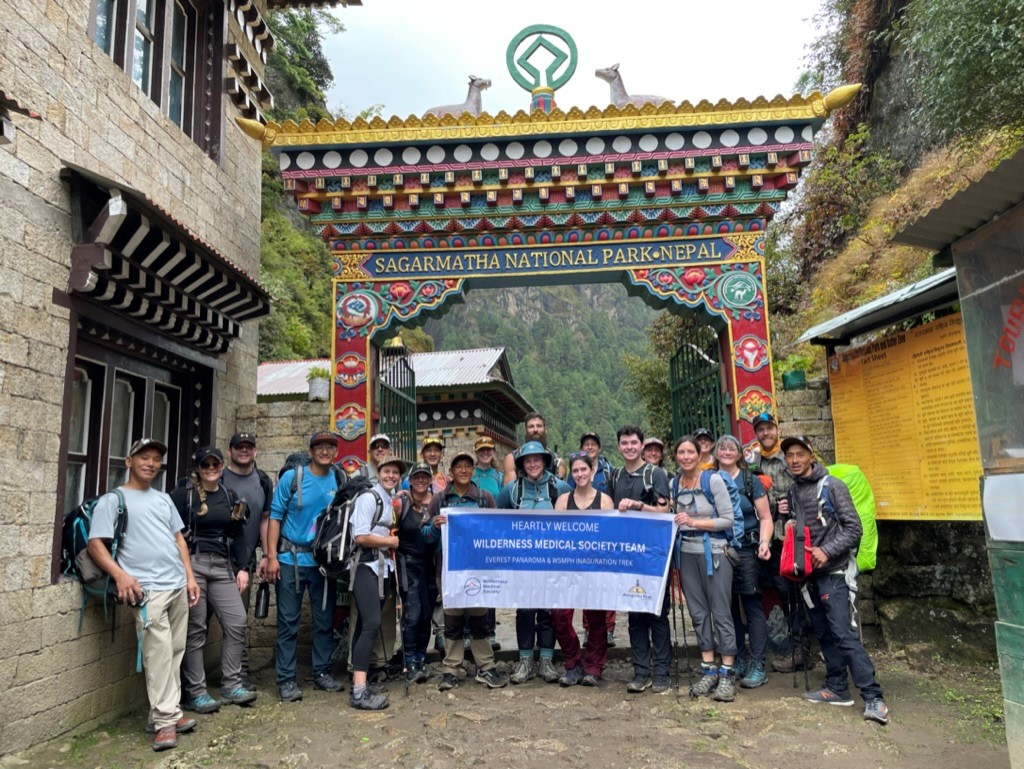
We've entered Sagarmatha National Park through the pagoda arch, dodging yaks, and greeting fellow trekkers. Our midday meal stop provides the opportunity to refuel, dry out, and enjoy our welcome Masala tea. Just before we enter Namche Bazaar, the clouds break, and we are greeted by soaring peaks surrounding us. A brief look before the curtains close again.
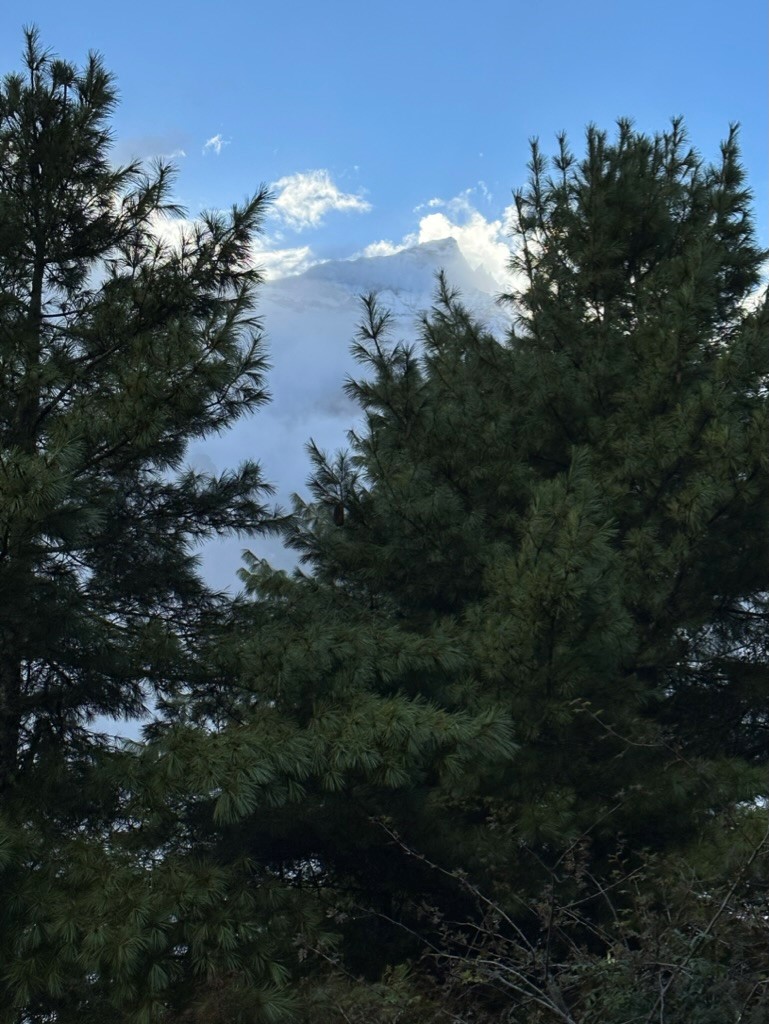
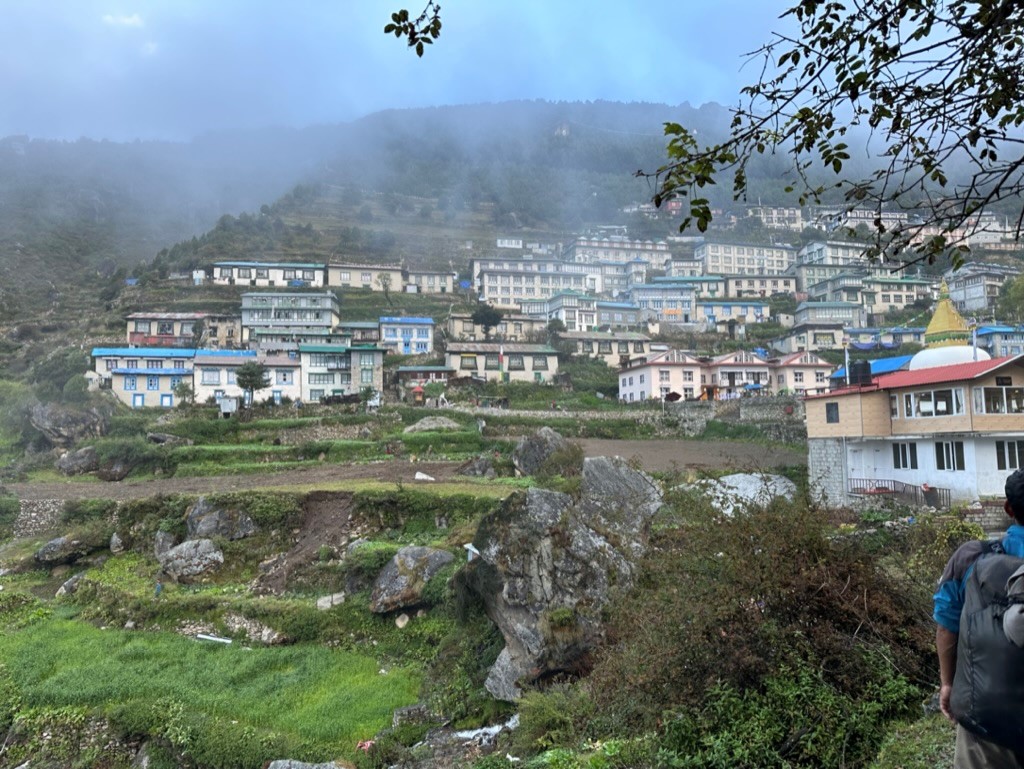
Entering Namche accompanied by light rain, the massive prayer wheels, driven by water, spin quietly and endlessly. Our accommodations are warm and welcoming. Masala tea - all around. Namche is a sensory feast of color, sights, and sounds. We explore the shops and shrines, cautiously pet the dogs roosting everywhere, and prepare for our next days.
Namche to Khumjung is a shorter trek, but our first day above 12,000 feet. We are off the "usual" trekking route now, walking up through clouds, around Mani stones (always clockwise!), to stop at Sagarmatha Next. Through upcycling, art, and recycling, Sagarmatha Next is an organization battling trash and waste in the Khumbu. The clouds scuddle through, making our group blurry shapes in the distance. We cannot see the surrounding peaks - but our vision is drawn to flora we might have otherwise missed; Himalayan Edelweiss, Gentian, Sorrel, Stitchwort, Sandwort... All part of the sensory experience.
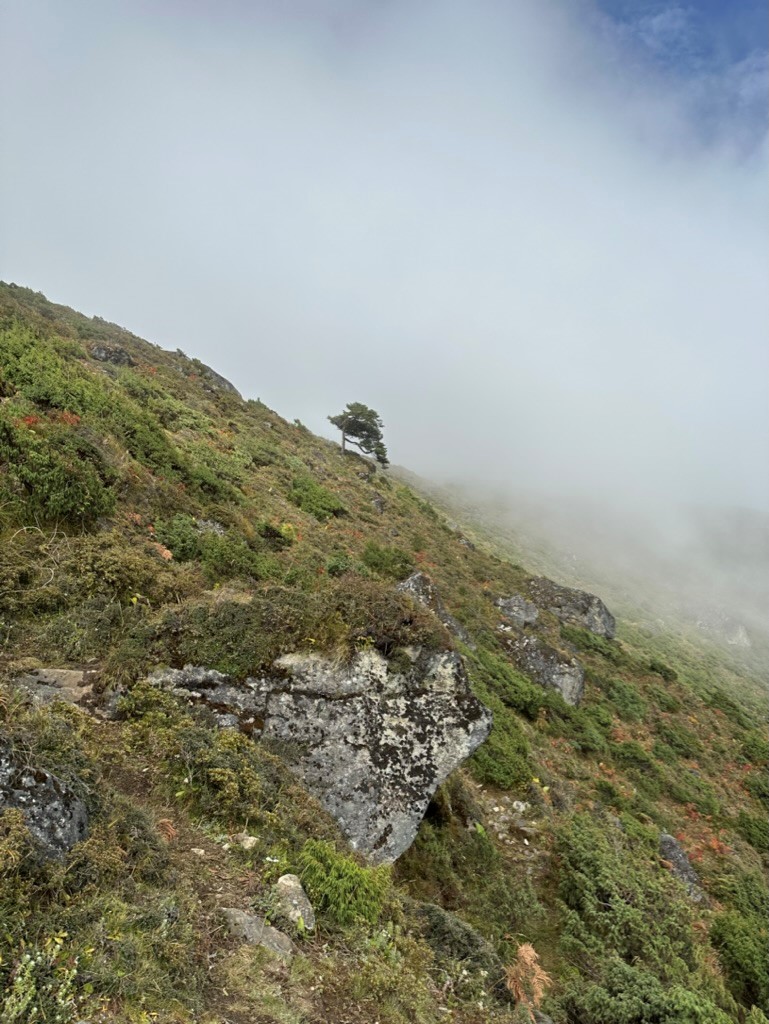
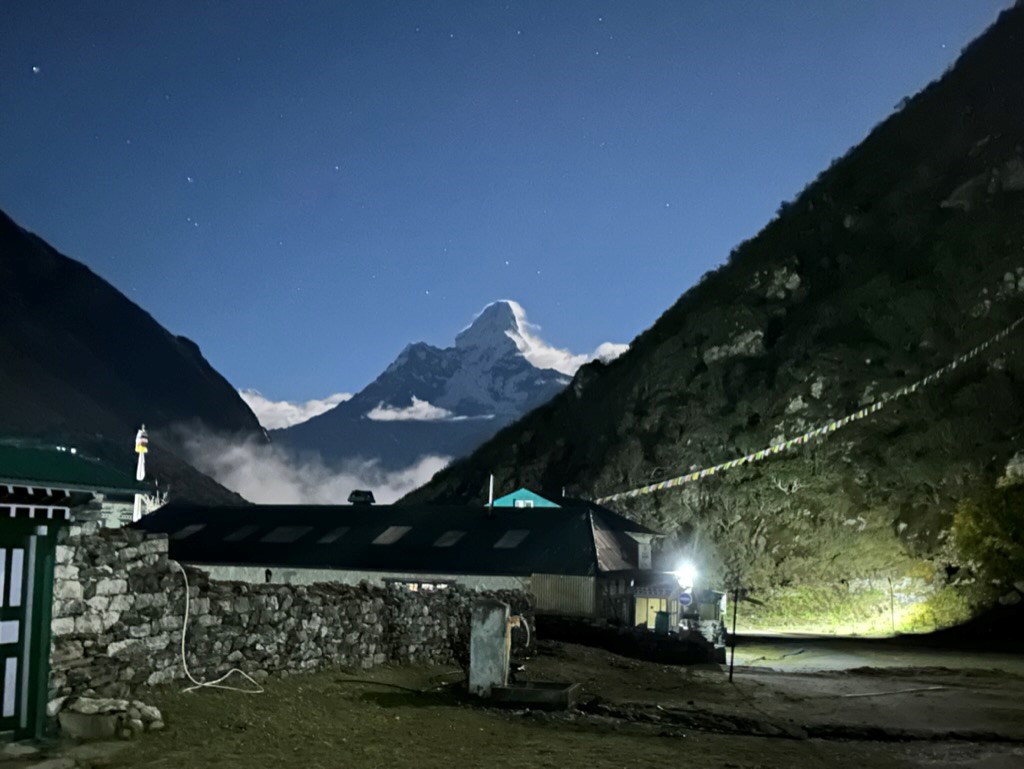
We are greeted in Khumjung by a mist-shrouded stupa and are again welcomed with Masala tea and warmth. Moonrise treats us to a spectacular sight. The sky is clear for the moment; Ama Dablam captures us all.
An intrepid cadre of the group rises before sunrise to capture the dawn light on the snowy peaks before we continue to Phortse - our next stop and the home of the Khumbu Climbing Center. The day begins with sunshine, but as before, we are soon surrounded by clouds moving through the peaks and valleys. We pass free-range yaks and dzo (cow/yak hybrid), who occupy the trails above and below our path. The muffling clouds make their appearance seem sudden and ghostly.
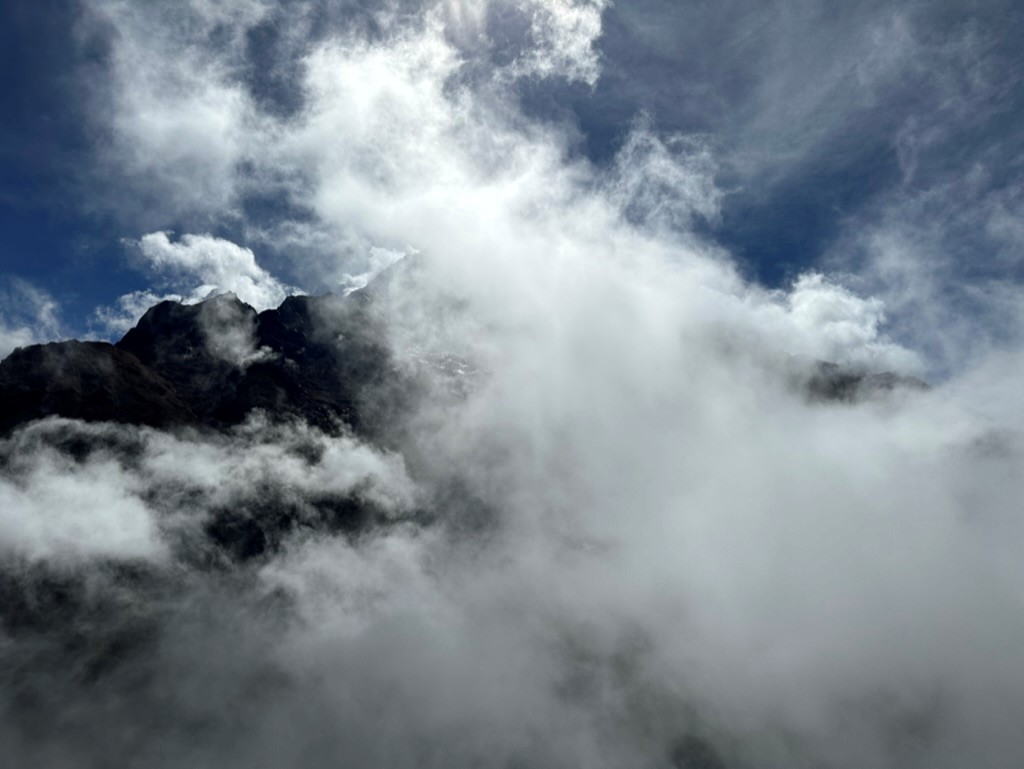
The trek from Phortse to Tengboche is shrouded in mist; stupas appear and disappear as the clouds scud through. We arrive midafternoon and are afforded a brief glimpse of the surrounding summits through the clouds - like a shy child peeking through curtains. As in Khumjung, the clouds thin at moonrise - we are greeted by the summits, draped in mist, and illuminated by the full moon.
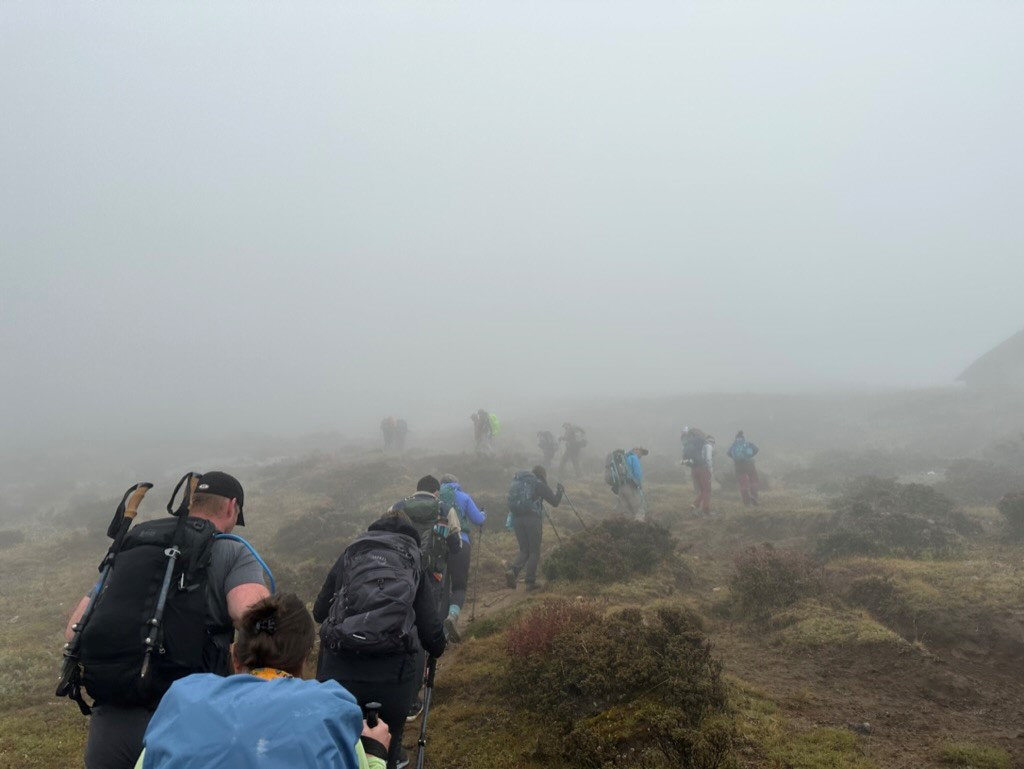
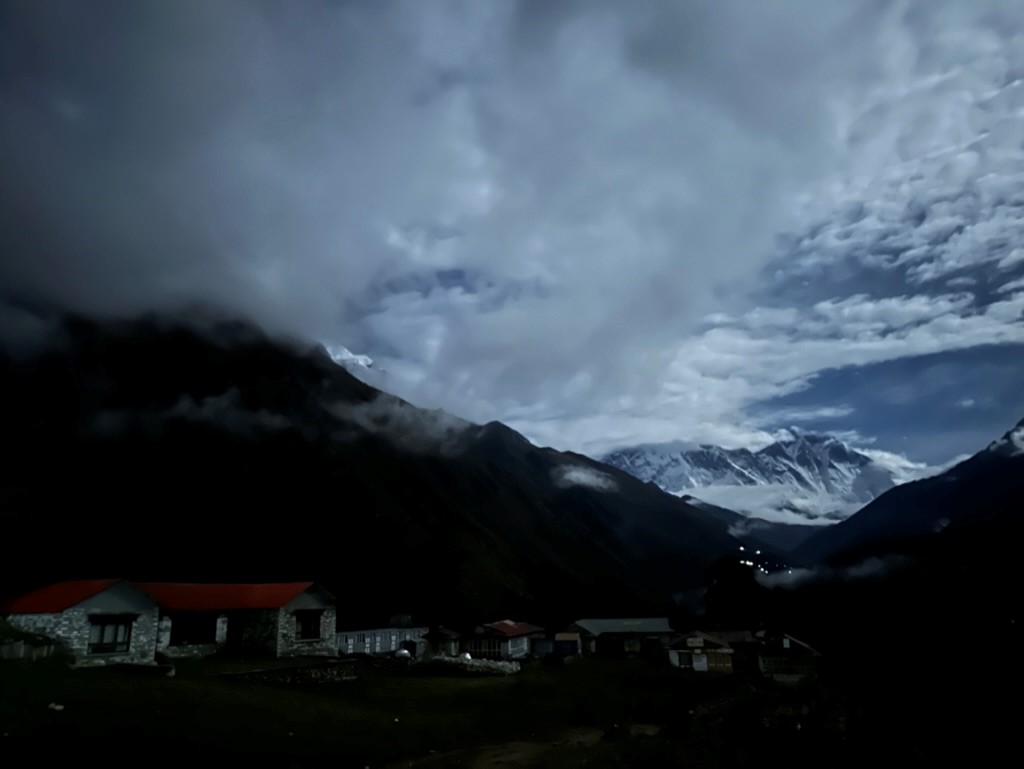
Had the weather not confounded our schedule, we would have flown to Tapting from Tengboche. Instead, the group now trekked back to Namche in hopes of a weather window. This was not to be. We appreciated revisiting Namche Bazaar and thoroughly enjoyed a night dancing with our Sherpa friends at the Irish Bar.
The weather continued to prohibit safe flight, so we returned to Phakding. The impact of the rains was evident in engorged rivers and violent waterfalls. We received texts from those in Tapting - updates of the hospital grand opening ceremony we were unfortunately missing. Preparing for an early morning trek to Lukla, we dried our belongings and found our rest.
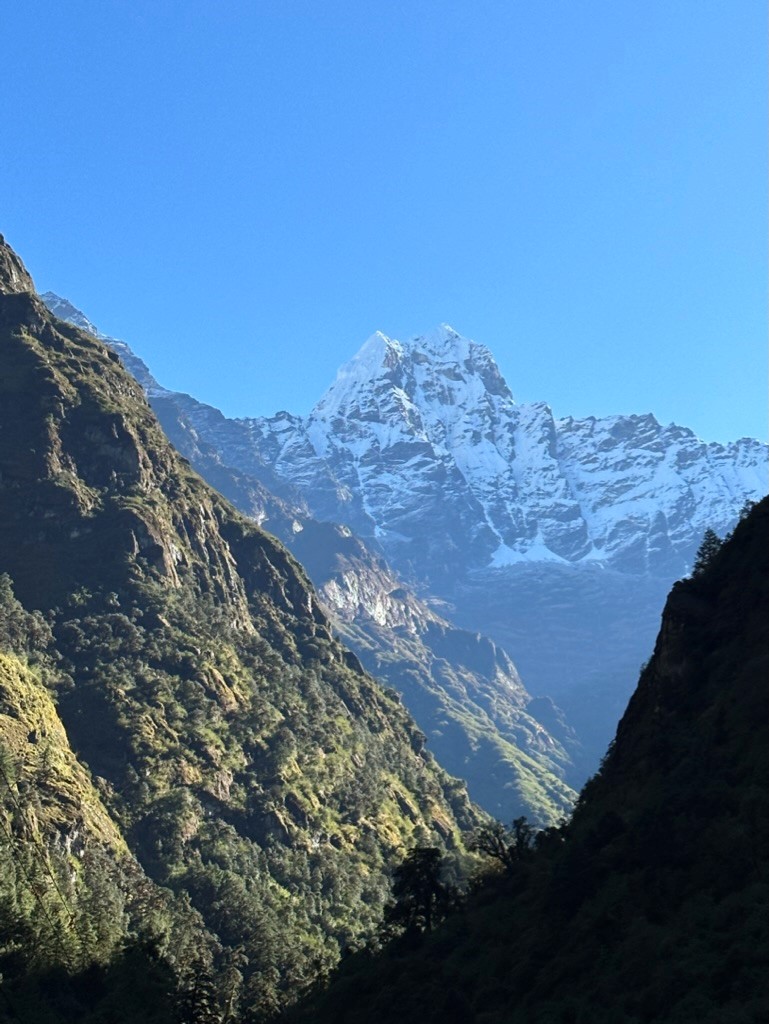
The morning greeted us with clear skies and brisk air. A very rapid trek to Lukla ensued. Helicopters were flying, prioritizing rescue, but our opportunity to make it to the hospital site was now present. Eventually, all group members did make it to Tapting and were greeted with marigold garlands and kata scarves. Each was given a tour of the facility to see what we were helping to create.
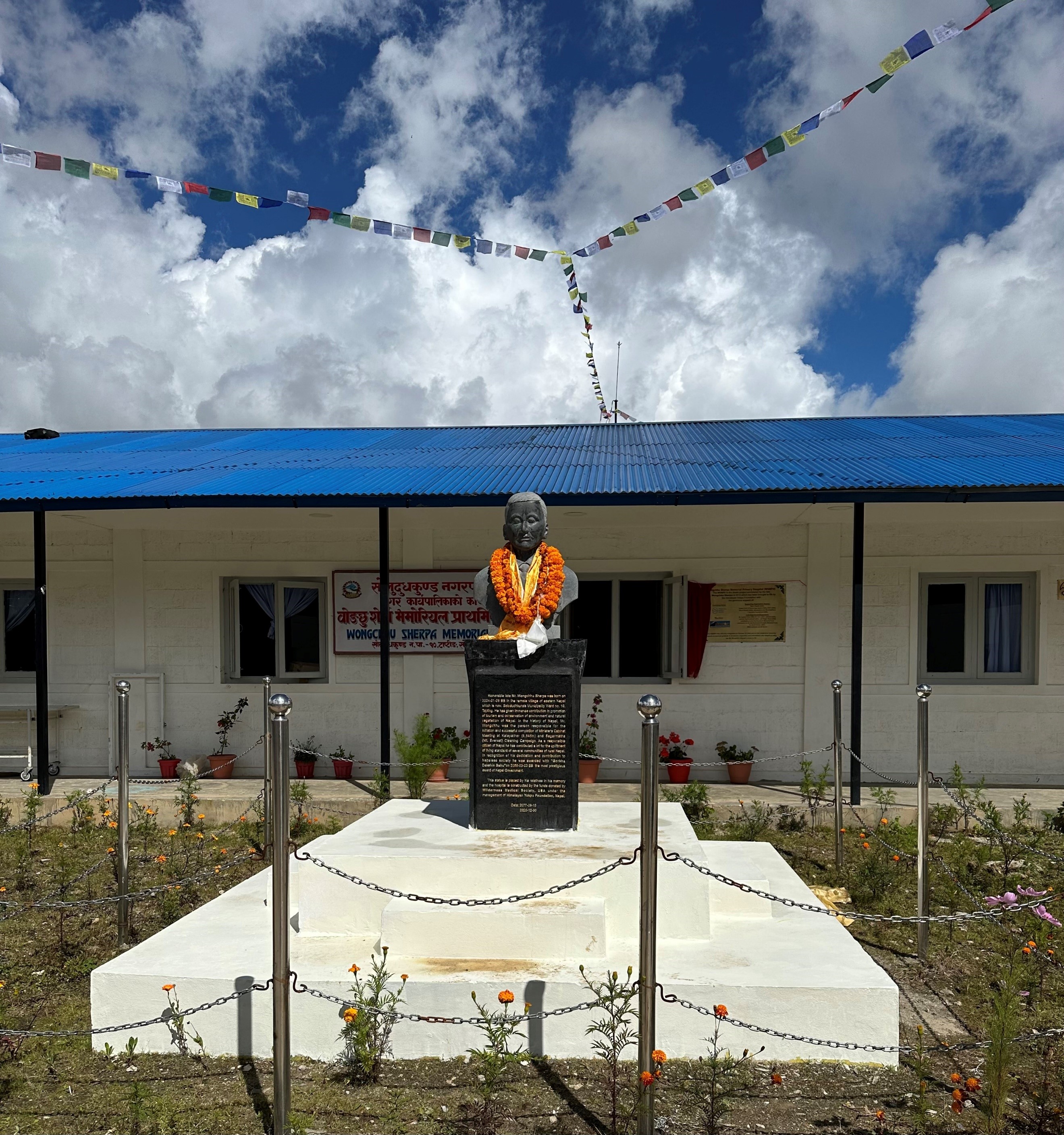
The next two nights were spent in tents arranged in the courtyard of the local school closed for the holidays. One classroom had been designated a kitchen, and another our dining area. Most of the group took the opportunity to hike to the local monastery, with a few staying behind to catch up on writing, sleep, and enjoy the quiet.
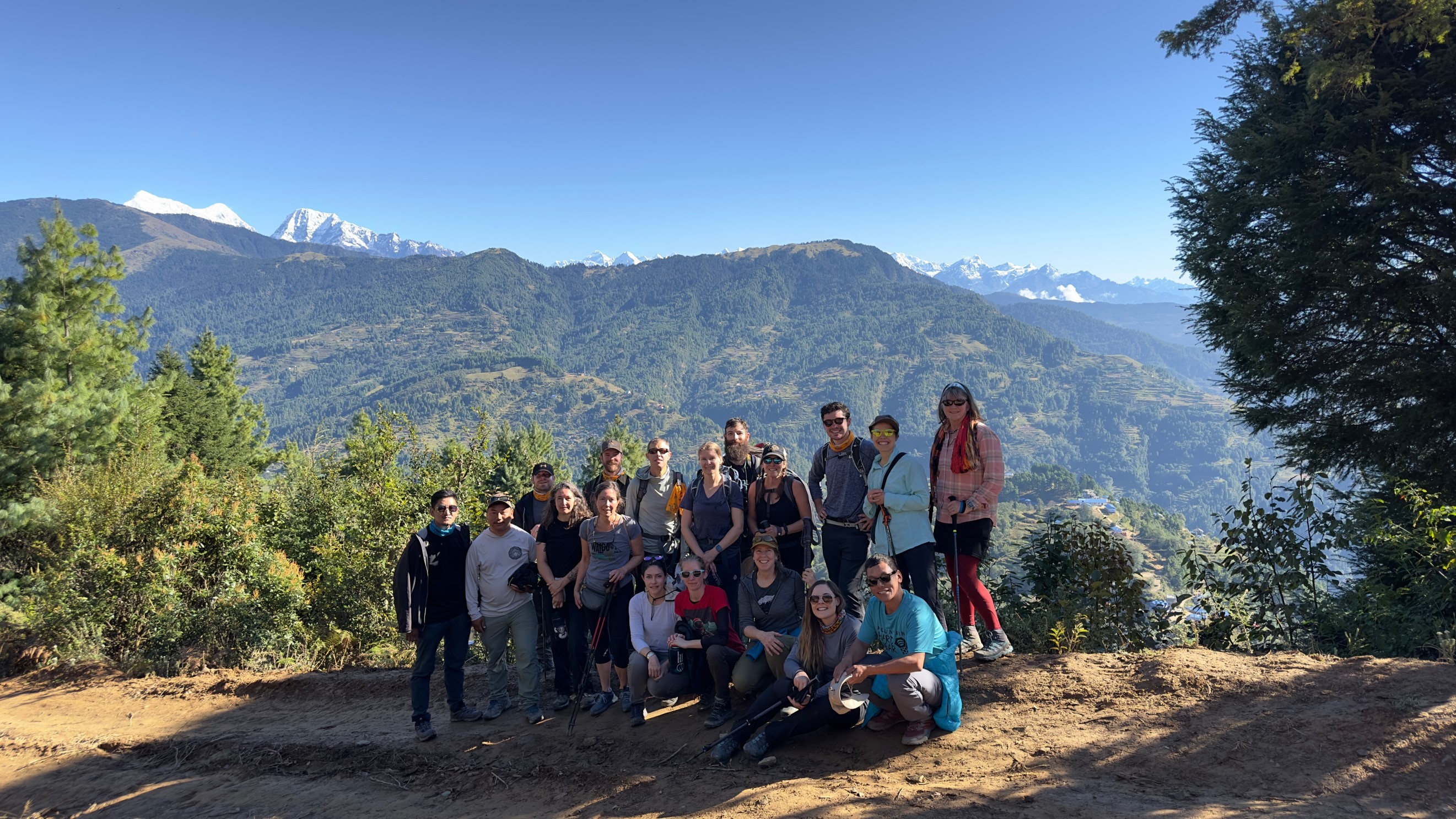
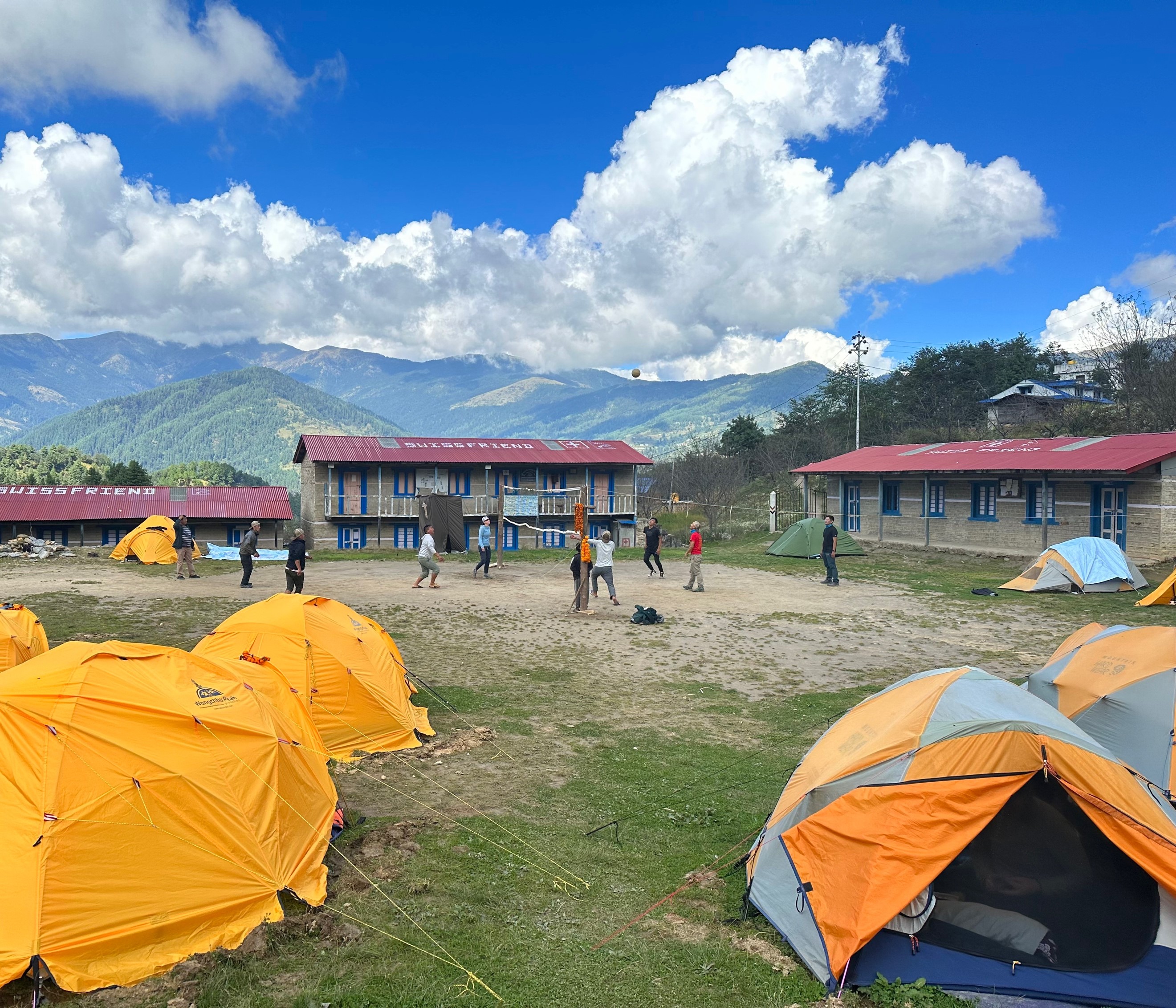
We left the valley and traveled back to Kathmandu by car. It was a long day on roads that were, at times, treacherous. By driving the roads an injured or ill person would need to traverse - it is made clear how needed the hospital is. Local healthcare will do much for this community. We left behind two members of our group - Dr. Marlena Strandir and her husband Jason – who are volunteering at the hospital for a month.
Our trek ended with a day in Kathmandu - including cheering on young beginner climbers at a competition sponsored by Musa Masala. The combined group - WMS and Musa Masala, honored each other's dedication to the project at our farewell dinner.
Sixteen strangers began in Kathmandu - now a family, bound by shared experiences and a new appreciation for the work of the Wilderness Medical Society and the Wongchhu Sherpa Memorial Hospital.
We learned to always walk uphill of a yak, to traverse the high suspension bridges with confidence, savor Masala tea and hot lemon-ginger drinks, lift our faces to the clouds and find joy in the moonlit mountains, appreciate the smiles of those we greet, and to start our day with a smile.
Jam Jam!! (onward)
Namaste,
Jenn